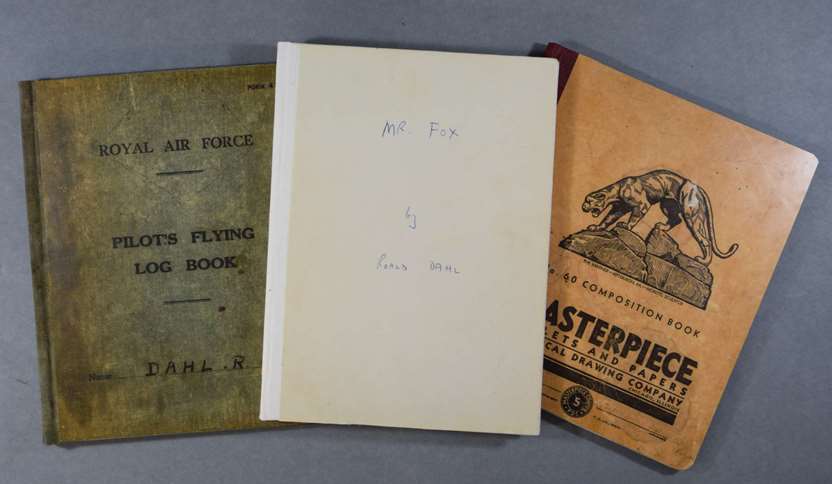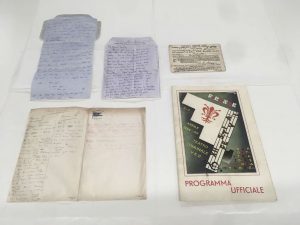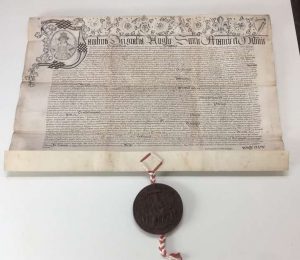
A facsimile (from Latin fac simile, “to make alike”) is a copy or reproduction of an old book, manuscript, map, art print, or other item of historical value that is as true to the original source as possible.
There are lots of reasons why a facsimile or replica can be desirable in a museum, archive or gallery display.
• The original object might be too light sensitive for prolonged exposure in an exhibition. This is especially true when an exhibition might continue for more than a few months or light levels cannot be guaranteed
• It might not be possible to borrow the original object
• Double-sided letters and manuscripts require a facsimile of the verso to be displayed alongside
• Handling copies are great for visitor interaction or education activities. School children can learn about handling with no risk to the original
• Original bound material can be displayed with a replica of the open pages covering the original to reduce light exposure
• With increasing administration costs from lending institutions, good replicas can help with exhibition budgeting
• Multiple copies might be required by different parties or family members

Replicas of letters and other documents relating to Benjamin Britten and Peter Pears, intended for long term display
Artworks Conservation is a leader in the manufacture and supply of a wide range of archival-quality reproductions. We’ve made replicas of author, Roald Dahl’s “ideas books” and WW2 Flying Log Book, copies of ephemera belonging to Nelson Mandela including trial cards and prison diaries, William Shakespeare’s will, airmail letters written between Benjamin Britten and Peter Pears and a late 18th-century, vellum-bound diary. One early project was to make replica banknotes for the Bombay Gin Distillery! Their gin is made in a former paper-mill, once owned by Portals who made much of the paper used for the world’s banknotes. Hence the need to display the mill’s past use. Our clients now include Science Museum Group, British Film Institute, European Parliament, Shakespeare Birthplace Trust, National Museum of Scotland and Mandela: The Official Exhibition.
Most of the replicas are paper-based, including those that imitate vellum, although these can include reproductions of wax seals and cords. Over the years we’ve also made copies of glass-plate negatives, acetate animation cells, photograph albums, a desk calendar, scrap-books and framed pictures. A speciality is framed replicas of Royal Charters.

A replica vellum deed with Great Seal of James I. This was created for use in education activities run by the Shakespeare Birthplace Trust
A good replica is much more than just a print of the original. We endeavour to match the weight and finish of papers, tone edges and introduce folds, small creases and undulations if necessary to really bring the object to life. In the majority of cases we never handle the original and are sent high-resolution TIFF or JPEG files by the client. However, we can undertake this high-res digitisation in-house and the client has the assurance that the objects are handled by trained conservators.

A framed replica of the Roll of Honour. The hand-written inscriptions were superimposed using PhotoShop onto an unfaded example of the same type of document
Most of the printing is done with a large, high-resolution inkjet printer on specialised, acid-free, 100% cotton papers. Unlike laser printing, these pigmented, dye-based inks have excellent light-fastness. The printed surface is also water-resistant enabling us to use archival paste to assemble multiple sheets, essential for vellum charters. The lightest weight paper we use is less than 100gsm, ideal for copying letters. We work with several bookbinders to replicate a wide range of book styles and manuscripts. Alternative printing techniques and non-paper printing surfaces can also be employed. In fact, we love problem-solving and being given a challenge so we continue to extend and refine our techniques.

Archival facsimiles made by Artworks Conservation on display at the Manchester Museum of Science & Industry
If you have a project in mind we’d love to hear from you and help create your exhibition. Email richard@artworksconservation.co.uk or call 01765 676600. Further examples of our work can be seen at https://www.artworksconservation.co.uk/museums/archival-reproductions/
















